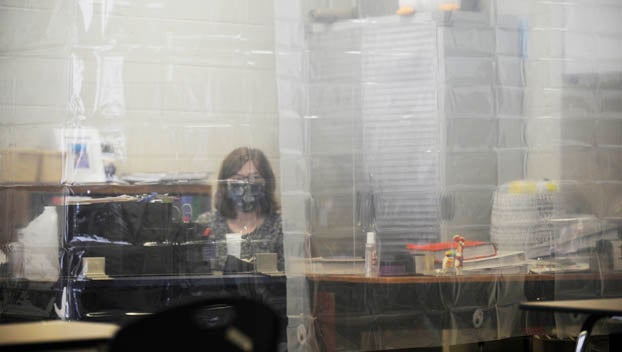Schools navigate ‘ever-changing’ year
Published 5:30 am Wednesday, March 24, 2021
|
Getting your Trinity Audio player ready...
|
Note: On March 24, 2020, Beaufort County recorded its first positive cases of COVID-19. Today, exactly one year after those first cases were recorded, the Daily News is starting a two-part series in which we’ll look at how the community has responded to the COVID-19 pandemic. The focus of today’s story is education.
Beaufort County Schools Superintendent Matthew Cheeseman vividly remembers Saturday, March 14, 2020.
That day, in response to the onset of the COVID-19 pandemic, Gov. Roy Cooper ordered schools closed for what was initially expected to be at least two weeks. Inside the Beaufort County Schools office, organized chaos ensued as administrators tried to decide what to do next.
“(Cooper) came to the podium at 4:30,” Cheeseman said. “By 5:15 I had 14 people in my office, and he wasn’t even completely done with the entire news report.
“And we were strategizing on what departments we needed to have moved very fast in terms of (allocating resources).”
The next day, Cheeseman called a principals’ meeting. Soon, the school district’s COVID-19 response efforts were in full swing. By March 16, BCS was distributing food to the community. And by March 18, the district had switched to remote learning — a format all North Carolina schools would stick with for the remainder of the school year.
That week began what Cheeseman says has been an “ever-changing “ year.
“I say all of it is ever-changing because as (state officials) learned more specifically about the virus, their guidance would change, their decision-making would change. Much of which was usually very positive.”
‘COVID EXHAUSTION’
In the past year, Beaufort County Schools has undergone four major operational changes. The first change happened when Cooper first ordered schools closed; in August 2020, the school board decided to begin the 2020-21 school year with four weeks of remote learning; on Oct. 12, 2020, the school board voted to give elementary school students the option to return to school under Plan A — in-person learning with minimal social distancing requirements — and gave middle schoolers and high schoolers a chance to return for two in-person days a week in a cohort format; and on March 11, 2021, the school board voted to allow all students to return for in-person learning under Plan A, four days a week, as of March 22.
The most recent change is a major step toward a return to normalcy, and it couldn’t come at a better time for BCS administrators, teachers and other personnel.
“People are COVID-exhausted,” Cheeseman said. “To have to make that many changes, and juggle and balance the number of children they have to deal with. When you think of school nutrition and how do you juggle all of those meals in and out of each school. You think transportation, and how do you clean and how do you have enough materials for people to feel safe.”
As of Tuesday, the school system had recorded 263 positive cases of COVID-19 across 14 schools and the central services buildings.
“We have just been very fortunate that, of the 80-plus who have died (of COVID-19-related reasons) in Beaufort County, we’ve been very fortunate that zero of them have been Beaufort County Schools employees,” Cheeseman said.
Beaufort County Health Director Jim Madson credited the school system for working closely with Kimberly Hough, the health department’s director of nursing, to prevent community spread whenever positive cases pop up.
NEXT STEPS
Cheeseman hopes schools will be allowed to return to a full-time in-person learning schedule when the 2021-22 school year begins. Current trends support that possibility: the state’s distribution of vaccines is moving along, Beaufort County’s COVID-19 metrics are trending in a positive direction, and many school districts including Beaufort County have already taken advantage of the opportunity to offer in-person learning under Plan A for all grade levels.
Approximately 60% of BCS staff members had been at least partially vaccinated as of Tuesday.
When a return to normalcy comes, the school system will have some experience to draw on if it faces a similar crisis in the future.
“If there’s anything that I hope to put in place moving forward,” Cheeseman said, “it’s specifically our response to a mobile crisis, meaning that we can implement all of these responses and be able to reach all students, not just some. When we rolled out that first week or two weeks, we still had children who had no access points at home, we still had children who had no ability to get online.
“It took time to get hotspots and other devices. But I think if I had to do anything differently, we would tighten up on what our measures look like to accommodate all kids in the shortest time frame possible.”







